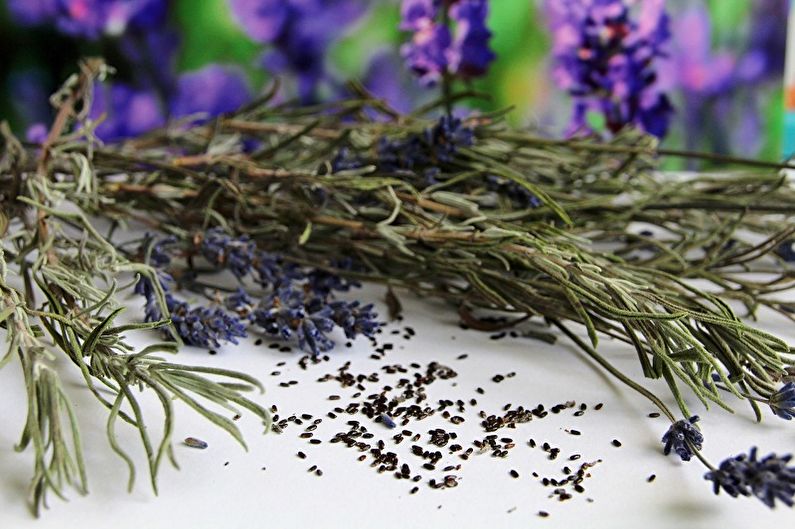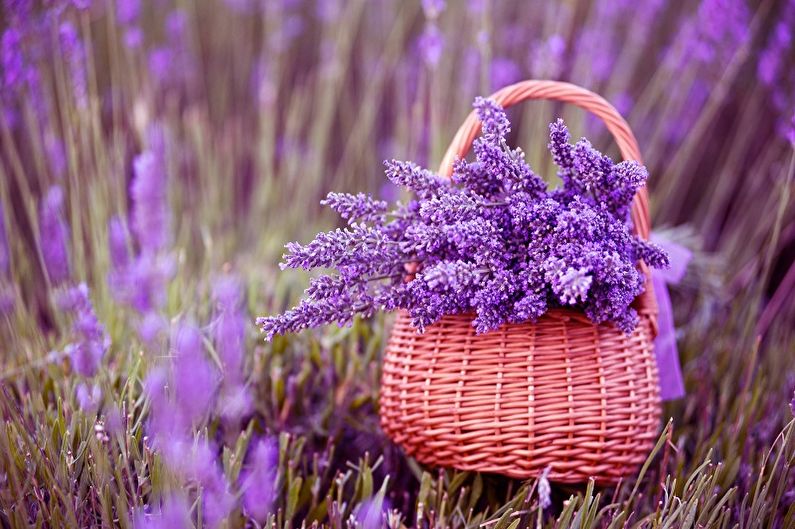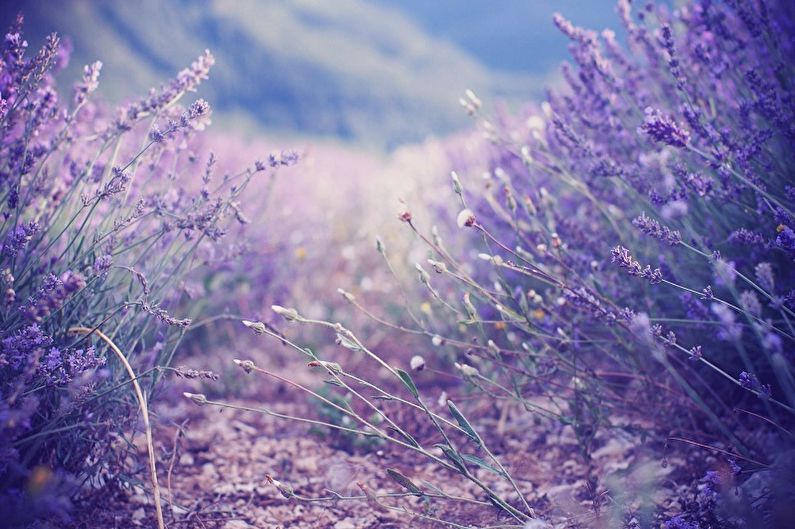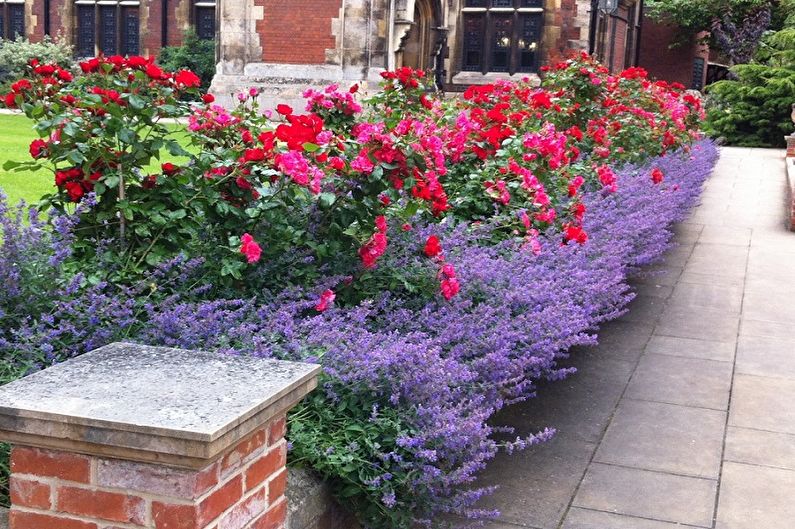
Lavender is one of the favorite plants of flower growers. Its fluffy bushes, brimming with a diverse palette of colors, can transform any residential area and also enhance interior design. Besides its suitability for landscape greening, it is worth noting its other qualities. For over a thousand years, the plant has been considered a medicine for various diseases. Due to the richness of its fragrance, lavender is widely used in perfume production, as well as in making shampoos, soaps, creams, and other products.
Main Types
To date, science is aware of about 47 species of this beautiful aromatic plant, which grows wild in northeastern Africa, India, and southern Europe. The cultivation of domesticated species and varieties of lavender is widespread around the world. Four types are especially popular: English, French, hybrid, and toothed.
English Lavender
This species has narrow leaves and elongated inflorescences-spicules, which is why it is also called “narrow-leaved”. The plant tolerates low temperatures well and can easily overwinter without needing to be dug up. The first records of it appear in medical books of the 13th century, describing the excellent medicinal properties of lavender essential oil.
For centuries, the culture was grown on the territories of monasteries and principalities for its healing properties. Additionally, it has quite a sophisticated aroma, which is why it is widely used in perfumery to produce expensive perfumes, colognes, soaps. Blooming with delicate blue or lilac buds begins in July and continues until early fall. Popular varieties include “Munstead”, “Alba”, “Delphinium-like” and others.

French Lavender
Unlike the previous species, French lavender is more capricious and demanding in care. Its main distinguishing feature is its broader leaves, which is why it is also known as “broad-leaved”. It is most commonly used for pot cultivation as slight frosts can easily destroy the plant. Even in the Middle Ages, this species was grown in the southern territories of France to produce essential oils, which were later used in medicine and perfumery.
The flowers of the plant have a rich palette – from white, pink to violet, and maroon shades. Blooming starts significantly earlier than other species, roughly in the middle of spring, and continues until July. With proper care, the buds can bloom again at the end of summer. Popular varieties include “Tiara”, “Rocky Road”, “Helmsdale”.

Hybrid Lavender
Also known as Dutch lavender, this species is cultivated on an industrial scale. It has quite impressive sizes, sometimes reaching up to two meters (about 6.6 feet) in height. The flowering begins in July, and the range of bud shades is entirely diverse among different varieties. For example, the lavender ‘Richard Gray’ has dark lilac buds, ‘Grosso’ has violet ones, and ‘Alba’ boasts pure white.

Toothed Lavender
This type of plant does not tolerate drops in temperature, so it can only be grown in warm climates. This decorative variety is well suited for indoor cultivation. A small bush with silver patterned foliage blooms with superb flowers of various shades of purple.

Proper Care for Lavender
For the most part, different types of lavender are not demanding in terms of special conditions – they are quite independent and can grow without human intervention. However, in order to enjoy the most lush, long-lasting blooming and incomparable aroma, care will still be needed.
Lighting
Lavender is a light-loving plant. The most favorable duration of daylight for it is 8–10 hours. Indoor specimens are best placed on a balcony from spring to early autumn. When planting the culture on a suburban plot, it is necessary to select open, unshaded areas.


Temperature
Most types of lavender withstand heat and cold robustly, so they can winter in open ground. The exception is the varieties of French broad-leaved lavender – their bushes are better transplanted into indoor pots for the winter. When grown indoors, the optimal temperature range is +61…+68°F (+16…+20°C).


Humidity
Dry air in home conditions will create an unfavorable environment for the plant, especially during the winter period when the heating season begins. If the pot is located near heating devices, it is necessary to place a container with water and pebbles nearby. In natural conditions, lavender is quite satisfied with atmospheric humidity. To protect the roots from fungal diseases, when planting the plant in the ground or pot, it is necessary to organize drainage from small gravel, potsherds, or walnut shells.

Watering
Maintaining a regular watering schedule is very important for lavender. In the warmer months, the plant needs watering 2–3 times a week (from May through September). With the onset of cooler weather, reduce watering to once a week. It’s better to use soft, settled water. Note that the plant is much more tolerant of drought than it is of excess moisture, which can cause root rot.


Fertilization and Feeding
In the first year after planting, if the soil was fertilized, lavender does not need additional feeding. After that, fertilize in the spring and at the beginning of flowering. In spring, add nitrogen-containing compounds to the soil, for example, a urea solution (1 tbsp. per 1 liter of water (approximately 3 teaspoons per 1.06 quart)). One bush will need about 5 liters (approximately 1.32 gallons) of such feeding.
Organic additives are appropriate during bud formation. You can buy ready-made solutions in the store or make your own by mixing liquid cow manure with water (0.5 liters of cow manure to 10 liters of water (approximately 0.13 gallons to 2.64 gallons)).


Diseases and Pests
Like any garden or houseplant, lavender is susceptible to certain diseases, which can be the result of improper care or viral infection. One of the most serious is “gray mold,” which can kill the bush if you don’t promptly remove the affected areas.
The silvery leaves and exquisite inflorescences often become a treat for small pests that feed on the plant’s sap. The most dangerous include:
– Spider mites. You can identify their presence by the dusty coating on the underside of the leaf (this is what their colonies look like) and the thin spider web;
– Leafhoppers and their larvae, which excrete a fluid that corrodes the stem. The bush begins to wilt at the damaged spots and may die.
In the fight against pests, spraying with a soap solution and using insecticides are effective. Sometimes predatory mites are intentionally released into mass plantings to destroy the weaker spider mites.


How to Transplant Lavender
You should only transplant lavender when necessary – do not frequently change the plant’s location, as it has difficulty adapting. For planting, choose a sunny, well-lit area with light soil. In the prepared spacious hole, about 16 inches in diameter (40 cm), add organic and mineral fertilizers, as well as a layer of drainage. After planting the bush, water the soil and mulch it to retain moisture initially.


Propagation at Home
There are several methods to propagate the desired variety – by seeds, cuttings, layering, and dividing the bush. The last method is the most risky, as the plant is quite delicate and can be damaged during careless division. However, considering that the bushes grow very quickly, sometimes division is a necessary measure.
Propagating Lavender with Seeds
You can buy seeds or collect them yourself – they remain viable for a long time (up to 5 years). Before planting, the material needs to undergo cold stratification for at least 1.5 months. You can sow directly into the ground closer to winter – seeds are buried shallowly, and the soil is mulched.
For planting seedlings at home, the optimal period is the end of winter – early spring. Prepare a shallow container, fill it with a universal potting mix for indoor plants. Distribute the seeds sparsely, about 0.8 inches apart (2 cm), as the roots develop long first. Sprinkle the bed with soil and water it. Cover the container with plastic or glass. Spray the soil daily. Once the first true leaves appear, you can prick out the plant.


Propagating Lavender with Cuttings
The fastest method is considered to be propagation by young green shoots. This procedure is performed in the spring-summer period (no later than the end of July). You need to choose a young branch on the bush with two growth nodes and cut a cutting about 4.7–5.1 inches long (12–13 cm) with a sharp knife. All leaves, except for the top, are removed. Then, treat the cut with a root formation stimulator, which can be purchased at a store. Plant in a small container with prepared soil, which should include organic compost and perlite.
After planting, water generously, reducing the frequency over time. The rooting period lasts 4–5 weeks, after which the plant can be transplanted into a larger container.


Propagating Lavender by Layering
Growing new bushes by layering will take more time – the period of forming new root systems can last about 3 months. Select a lower branch of the bush and place the middle section of it in a small dugout hole (about 4 inches deep). The flowering or leaf-covered end should be on the surface. Fix the branch with a stone or staple and cover the hole with soil. The deepened place must be watered regularly. After several months, the new bush can be separated from the mother plant and transplanted.

Propagating Lavender by Division
As mentioned earlier, lavender is quite sensitive to division, so this method should be used as a last resort. The separation is carried out in early spring. Each section should have at least 3–5 living stems and a corresponding share of roots. Holes up to 12 inches deep are dug for planting, the bottom of which is equipped with nutritious fertilizers, compost, pine bark. After immersing the bush, it needs to be covered with soil, lightly tamped down, and watered.


Lavender – Photos
Lavender is a stunningly beautiful plant that looks equally attractive both in room pot compositions and in the suburban area. It is used to create living hedges, mixed borders, decorating rock gardens, and alpine slides. In our photo gallery, you can familiarize yourself with the variety of species of this culture, its luxurious flowering, and the ways of decorating suburban areas. Enjoy your viewing!





































Leave feedback about this